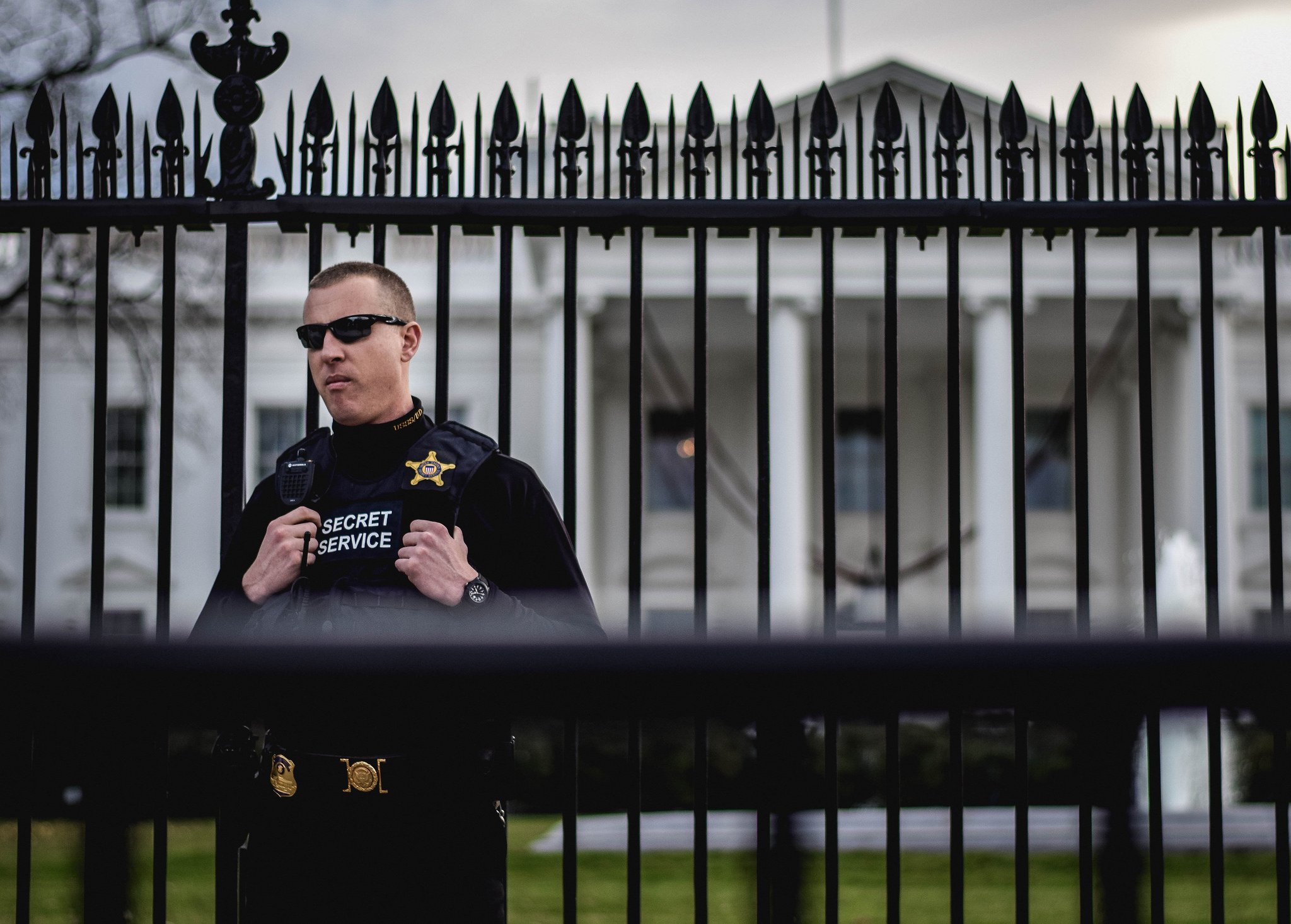Since construction was completed on the White House in 1800, architectural renovations have been ongoing to improve White House security and livability. These have ranged from major construction projects—such as the East and West Wings basement —to less structural improvements such as the addition of a single-lane bowling alley or solar panels on the roof.
While many of these renovations were implemented to expand the living and workspaces or personalize the décor, a growing need for security also warranted updates to the existing building and surrounding grounds.
In the 1950s, during a massive digging project and reconstruction of the interior of the White House, a system of underground tunnels and bunkers was built to enable the president and his staff a quick exit during an emergency situation (including a trap door underneath the desk in the Oval Office). Since at least 2004 the White House has also enjoyed the protection of an anti-aircraft missile battery located on the roof of the adjacent New Executive Office Building. (This is kitty-corner from the Oval Office. You can see it on the Google Maps Satellite view below.)
Highly Visible White House Security Measures
The most visible indicator of White House security has always been the ever-evolving perimeter fence. The White House originally had no fence at all, and the grounds were entirely open (many Presidents even welcomed unannounced visitors to the salon each week). Thomas Jefferson put up the first fence—a wooden split rail fence, later replaced with largely ornamental waist-high iron fence and low stone wall—largely to deter livestock from wandering the White House grounds. Later fences were aimed more at deterring people—most notably the 1970s modification of the original Federal-era fence, transforming it into a relatively unobtrusive six-foot metal fence atop an 18-inch stone base.
Even this tall fence proved ineffective in deterring fence-jumpers—at least 20 made it over before they added metal spikes in 2015. Adding sharp metal spikes served to deter individuals from climbing, the measure was considered a stopgap at best. For years, experts had called for the fence to be both higher and re-engineered to eliminate the horizontal bars that make it so easy to scale. In July 2019 the White House finally began replacing the iconic six-foot tall iron fence with a thirteen-foot tall fence that featured wider and stronger fence posts, anti-climb features, and intrusion detection technology “designed to mitigate current and future security threats.”
Throughout 2020, as protests and civil unrest around the White House mounted in response to the pressures of both the COVID-19 pandemic and increasing calls for social justice, the White House was surrounded in a frequently shifting scramble of “temporary” chain-link and “bike-rack” fencing, concrete anti-ramming jersey barriers, and solid white “anti-climb” walls.
Retrofitting the White House with Bulletproof Glass
Not every security measure is as obvious as digging a basement or building a fence. Crews have never been seen replacing the exterior windows of the White House, but a 2011 shooting incident confirmed the presence of bulletproof glass windows in the presidential residence. Jim Richards, CEO of Total Security Solutions, has experience retrofitting ballistic glass in historic government buildings in and around Washington, DC. He’s found that backing existing windows with a second ballistic layer is almost the norm.
According to Jim: “It’s probably the easiest thing to do when you’re going back through with a retrofit. A lot of times, with a historical building exterior, they want to keep that look, so instead of having to tear out glass, rebuild mullions, add structural members to support the added weight, it’s a lot easier to just lay in the transparency behind the existing windows.”
Access Control at the White House
Access control is another area in which the White House has continued to tighten security. At one time, even as recent as the 1980s, it was not uncommon for 6,000+ visitors to make their way through the White House. Tickets were in extremely high demand and were often sold by scalpers at a much higher price. After September 11, 2001, however, tours were suspended. While they have been reinstated for periods on and off since that time, to arrange a tour of the White House currently, you must work through a member of Congress and it can often take up to six months to gain access.
NEXT STEPS
- Sign up for our newsletter to stay up-to-date with the latest industry news
- Follow us on Twitter, Facebook or LinkedIn
- Download our Ultimate Guide to Bulletproof Glass and Bullet Resistant Barriers infographic

![[Image]](https://www.tssbulletproof.com/hs-fs/hubfs/Imported_Blog_Media/pict1.jpg?width=530&height=378&name=pict1.jpg)

